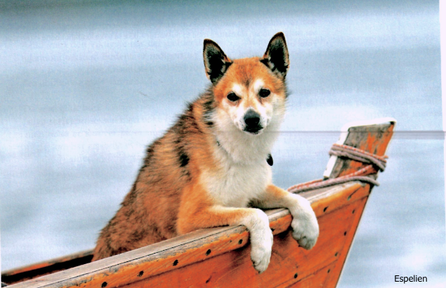The holy grail is discovery of a population of dogs that has been isolated for generations and contains genetic diversity long lost in the main population of dogs. Failing this, however, many breeds do in fact retain enough genetic diversity to improve health and open up new options for breeding. But when a breed reaches the limits of improvement using the diversity remaining in the breed, the only other option is to restore the genetic diversity that has been lost to selection and genetic drift.
| More and more breeds are beginning to consider development of breeding strategies to improve genetic health. But the rehabilitation or even rescue of a breed is a big undertaking that requires a lot of planning and information about the genetic status of the breed to be improved. Too often, enthusiastic breeders begin their own cross-breeding project, only to have it fizzle within a few years for lack of participation or inadequate planning. There's no doubt about it - genetic rescue is difficult. Before you launch your ship into the sea, you want to know as much as possible about your boat and have a good map to guide the way. |
| You can learn more about genetic rehabilitation and rescue of dog breeds in ICB's online course "Strategies for Preservation Breeding". |
Genetic assessment of the breed from pedigree &
DNA data
Central to the development of a plan for genetic rescue is information about the current
genetic status of the breed. The pedigree database is a primary source of historical genetic
information, and DNA analysis can now be used to supplement this with much detail about
actual genetic diversity, gene frequencies, inbreeding, relatedness, etc.
Historical Information From Pedigree Data
- Number and identity of founder dogs
- Changes in population size over time
- Loss of genetic diversity
- Changes in effective population size
- Average inbreeding over time
- Average kinship over time
- Genetic contributions of founders
- Addition of unrelated dogs (new founders)
- Fraction of dogs used for breeding
Genetic Information From Pedigree Data
The pedigree database can provide a significant amount of critical data about the current genetic status of the breed, including several measures of genetic diversity, genetic composition of current dogs, size of the gene pool, relatedness of dogs in the population, etc.:
- Level of inbreeding (coefficient of inbreeding, F, or "COI")
- Genetic relatedness (mean kinship, mK, and average mK for the population)
- Effective number of founders (fe)
- Eeffective number of ancestors (fa)
- Founder genome equivalent (fg)
- Effective population size (Ne)
- Origin of genetic variation
Genotyping using high-density SNP chips (e.g., Illumina CanineHD SNP chip; > 170k markers) can provide a wealth of information about the genetics of the current animals in the population, and it can also be used to estimate historical trends in effective population back hundreds of generations. Information from DNA analysis will be "realized" instead of "estimated" or predicted, because it is based on DNA marker status and not on probability of allele inheritance from pedigree data.
Genetic information from DNA genotype analyses (SNPs)
- Genetic diversity (observed and expected heterozygosity, Ho & He)
- Genetic structure(Fst)
- Current and historical effective population size (Ne)
- Genomic inbreeding (as F)
- Genomic inbreeding relative to the population (Fis)
- Genomic kinship coefficients and kinship matrix
- Fraction of polymorphic loci
- Population genetic structure (e.g., principal components analysis, cluster analysis)
- Genealogical relationships determined from DNA and cluster analysis
- Assessment of disease risk without knowledge of the genes involved or mode of inheritance
- Localization of inbreeding on individual chromosomes (runs of homozygosity, ROH)
- Genetic relatedness to other breeds
- Across-breed comparisons of patterns of homozygosity on the chromosomes (ROH)
The goal of a genetic rescue is ideally to restore a breed to its original genetic state. We rarely know what that is, but
Phenotype Information
- Size and weight
- Conformation (e.g., proportions, topline, tailset, head size, athleticism)
- Specific features of type (e.g., ears, skull, coat type)
- Temperament and behavior
- Purpose
Genetic Information
- Inbreeding and mean kinship within cross breeds
- Haplotype sharing of cross breeds with other breeds (indicating historical relatedness or crossing)
- Genetic relatedness to rescue breed
- Shared blocks of homozygosity with rescue breed
- Potential to produce genetic diversity in F1 crosses
Logistics
- Number of reproductive dogs available
- Number of participating breeders
- Number of breeds for crossing
- Number of cross-breed dogs
- Placement of F1 dogs
- Number of dogs to be bred in Year 1
Breeding
- Phenotypic considerations for pairing
- Genetic considerations for pairing
- Optimizing of cross-breeding strategy
- Predicted genetic diversity of F1s
Prediction of Progress
- Population size
- Inbreeding
- Kinship
- Population genetic structure
- 1 year, 5 year, and 10 year projections
ICB's online courses
***************************************
Visit our Facebook Groups
ICB Institute of Canine Biology
...the latest canine news and research
ICB Breeding for the Future
...the science of animal breeding


